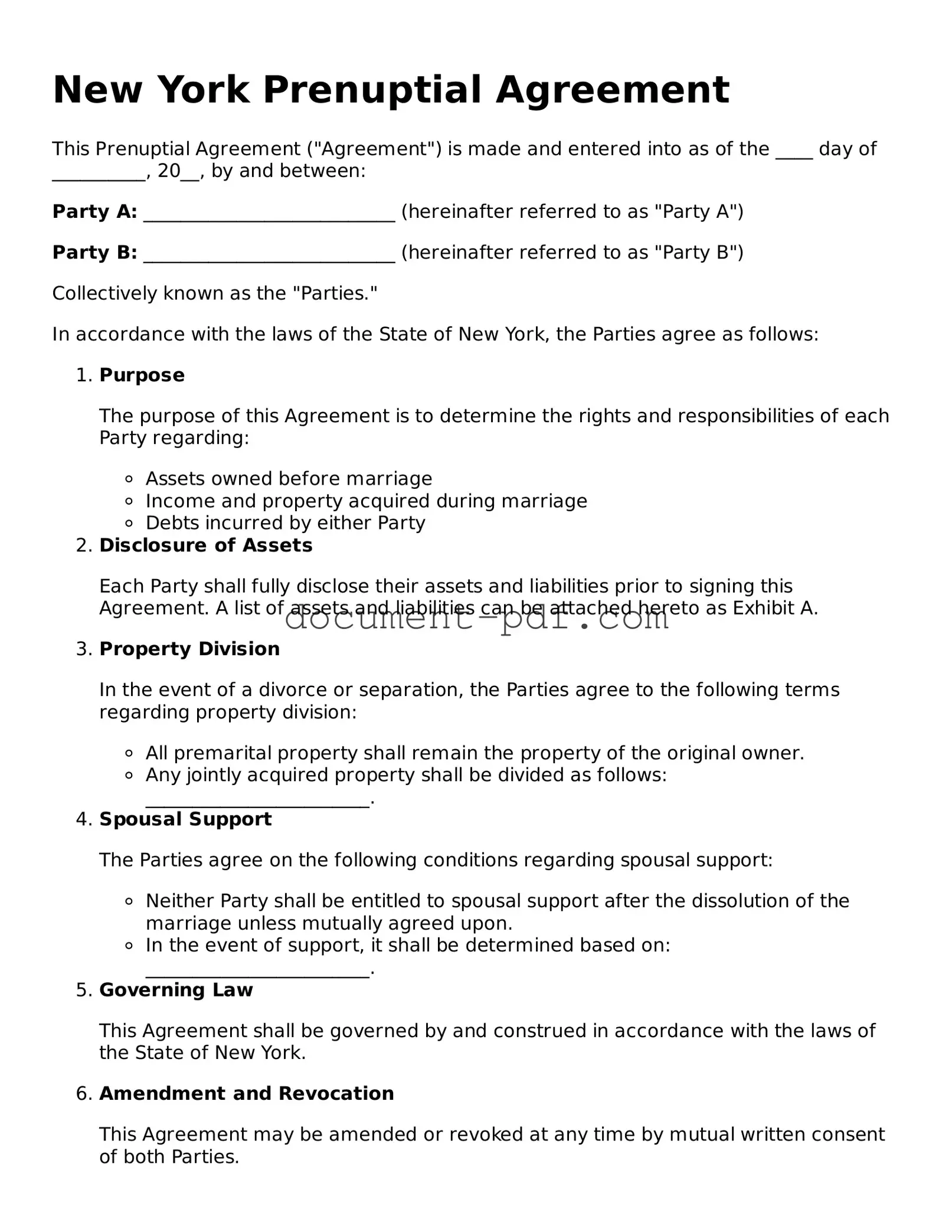New York Prenuptial Agreement
This Prenuptial Agreement ("Agreement") is made and entered into as of the ____ day of __________, 20__, by and between:
Party A: ___________________________ (hereinafter referred to as "Party A")
Party B: ___________________________ (hereinafter referred to as "Party B")
Collectively known as the "Parties."
In accordance with the laws of the State of New York, the Parties agree as follows:
- Purpose
The purpose of this Agreement is to determine the rights and responsibilities of each Party regarding:
- Assets owned before marriage
- Income and property acquired during marriage
- Debts incurred by either Party
- Disclosure of Assets
Each Party shall fully disclose their assets and liabilities prior to signing this Agreement. A list of assets and liabilities can be attached hereto as Exhibit A.
- Property Division
In the event of a divorce or separation, the Parties agree to the following terms regarding property division:
- All premarital property shall remain the property of the original owner.
- Any jointly acquired property shall be divided as follows: ________________________.
- Spousal Support
The Parties agree on the following conditions regarding spousal support:
- Neither Party shall be entitled to spousal support after the dissolution of the marriage unless mutually agreed upon.
- In the event of support, it shall be determined based on: ________________________.
- Governing Law
This Agreement shall be governed by and construed in accordance with the laws of the State of New York.
- Amendment and Revocation
This Agreement may be amended or revoked at any time by mutual written consent of both Parties.
- Entire Agreement
This document constitutes the entire agreement between the Parties. No other understanding or agreement shall exist.
- Signatures
The Parties hereby sign this Agreement on the date first above written.
- Party A Signature: ___________________________ Date: ______________
- Party B Signature: ___________________________ Date: ______________
